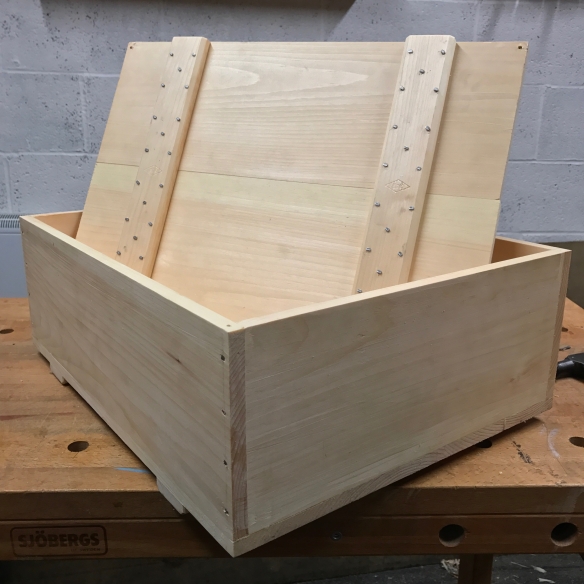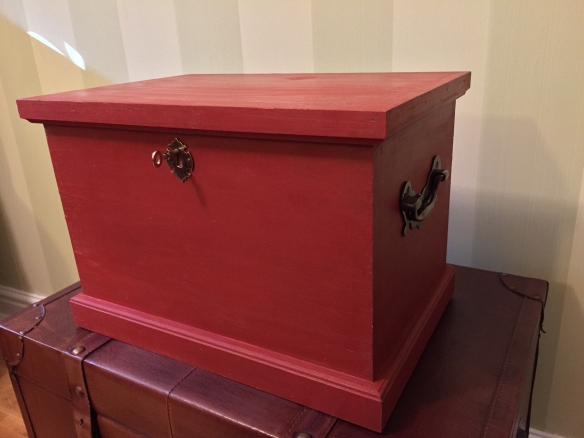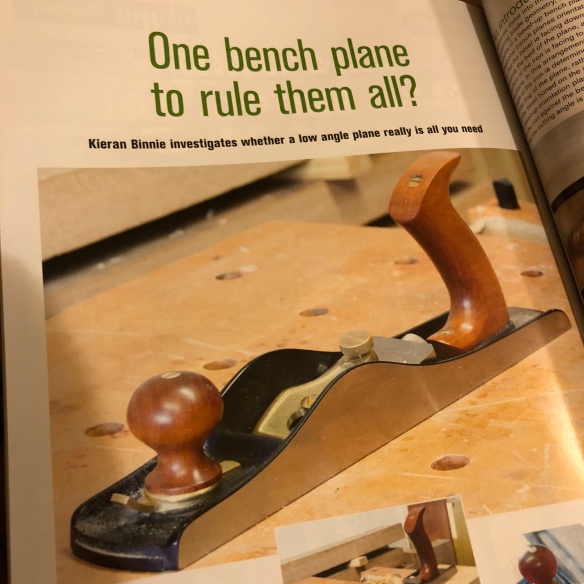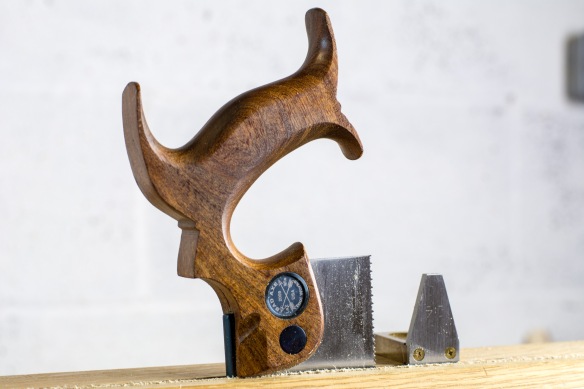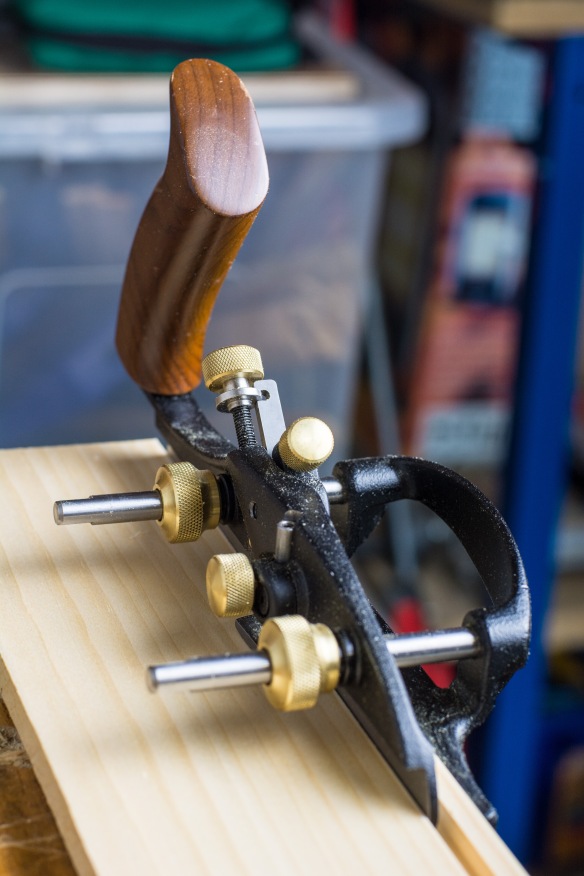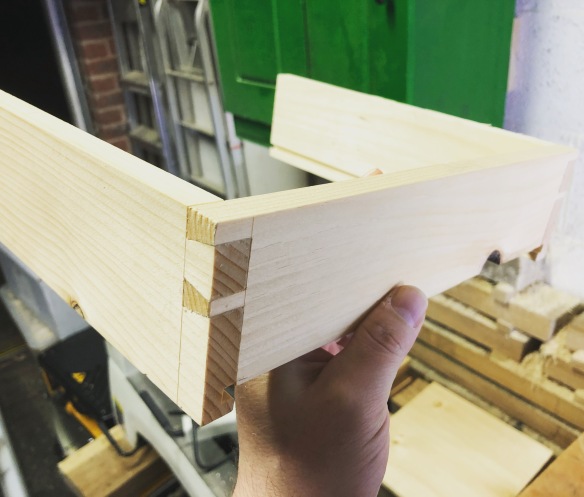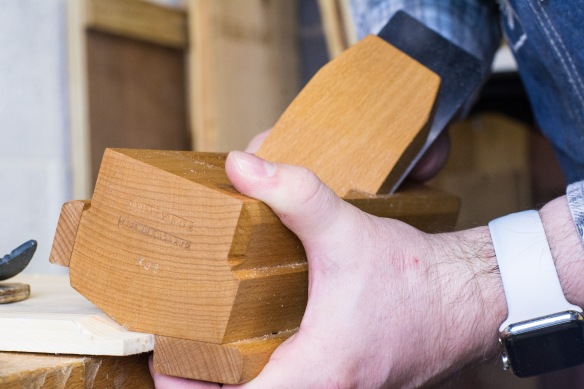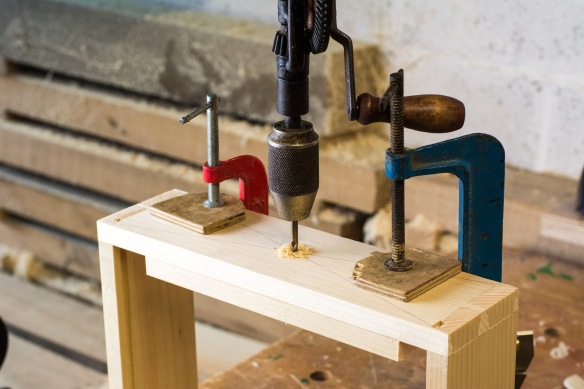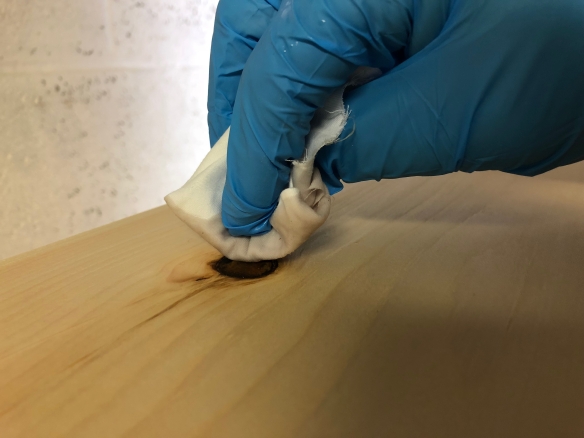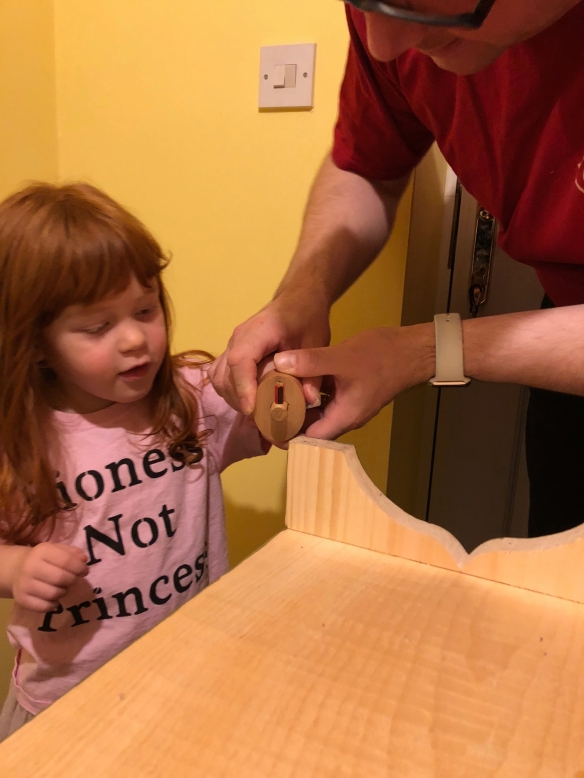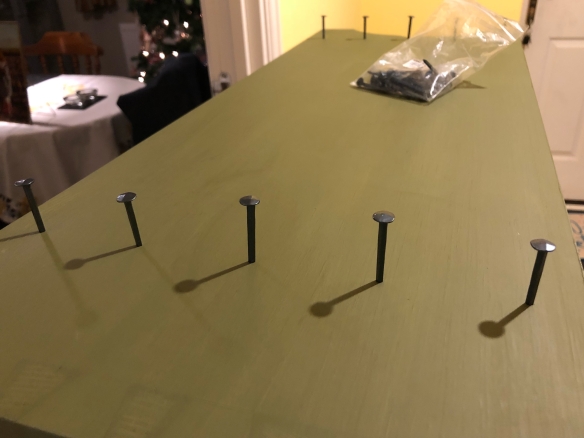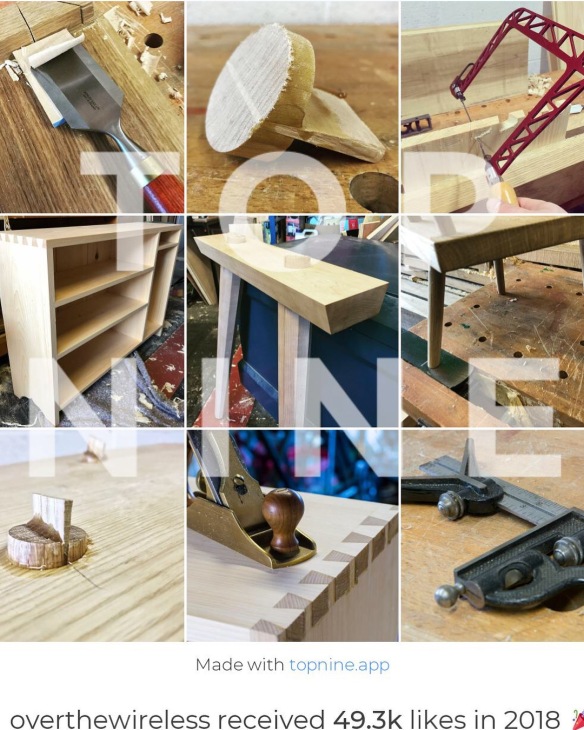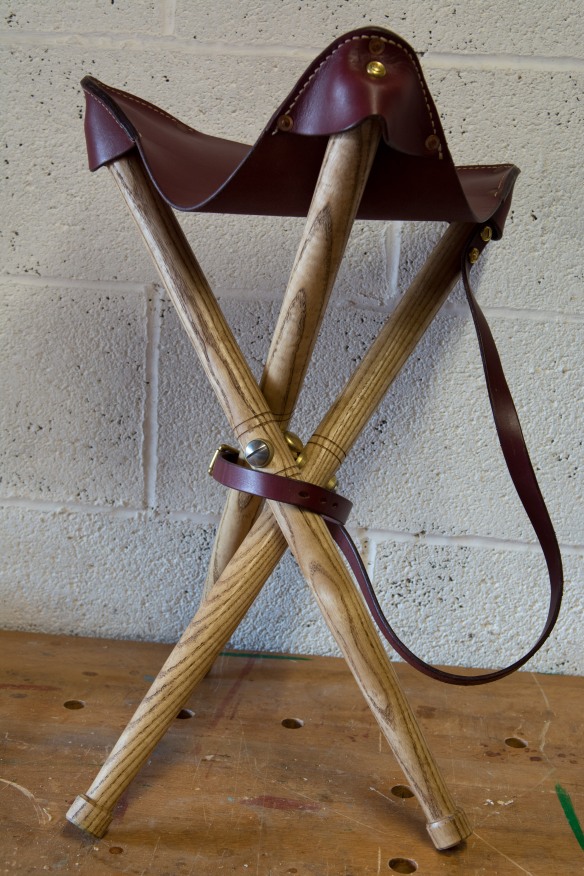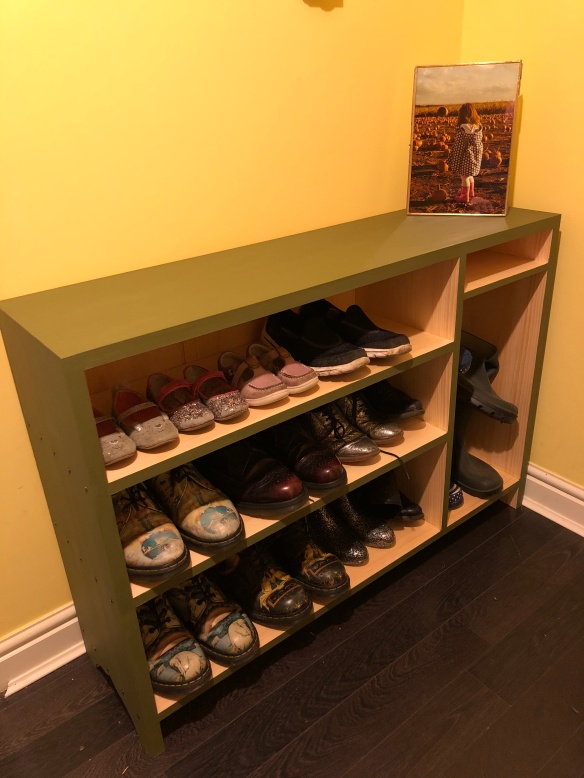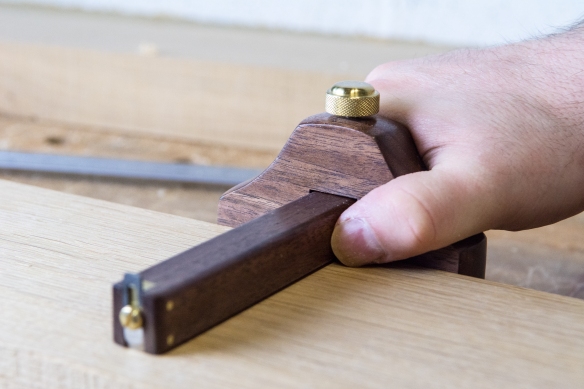
My new Hamilton Woodworks traditional marking gauge in use
It is hard to believe, but I first started thinking about a Roubo bench build four years ago. And finally, I have started the build in earnest. This promises to be a fascinating project with plenty of learning opportunities, both in terms of building the bench and then using it. The scale of the work involved is quite different to anything I’ve done before – in many ways it feels more akin to timber framing than to furniture making. And that is one of the two reasons why I decided to start by making the under carriage, rather than tackling the (frankly monolithic) slap top – working my way up from smallest component to largest means that I will have my process figured out, and adjusted to the scale of work, by the time I address that imposing slab of oak. The other reason is that while the top continues to acclimate to the workshop (a process that could take some time) it is liable to move, which means that starting with the top would result in several flattening sessions being needed by the time I assemble the bench. In contrast, the components for the undercarriage have all acclimatised, which means that they will be much more dimensionally stable.
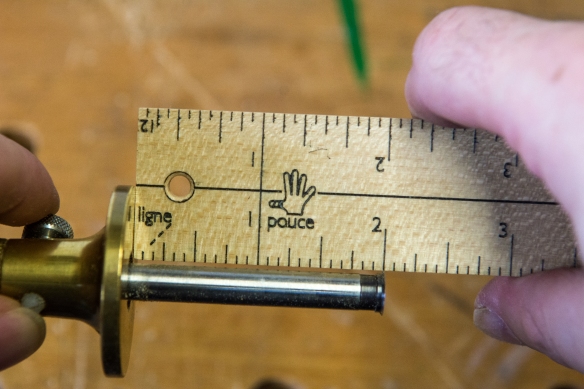
All measurements for this build will be taken from the Pied du Roi ruler made by Brendan Gaffney
Following the principle of working smallest to largest component, I started by processing material for the four stretchers. These are 4″ wide, 2″ thick, and will have 3″ barefaced tenons on each end. Regular readers may remember that my brief for this project was working from the description in With All the Precision Possible, and using the 18th century French Pouce as my base unit of measurement. All measurements I use on the blog for this project will, unless otherwise stated, refer to the Pouce rather than a modern inch (to be honest this is as much for my benefit as anyone else – if I have to swap between two different measurement systems I’m going to get very confused).
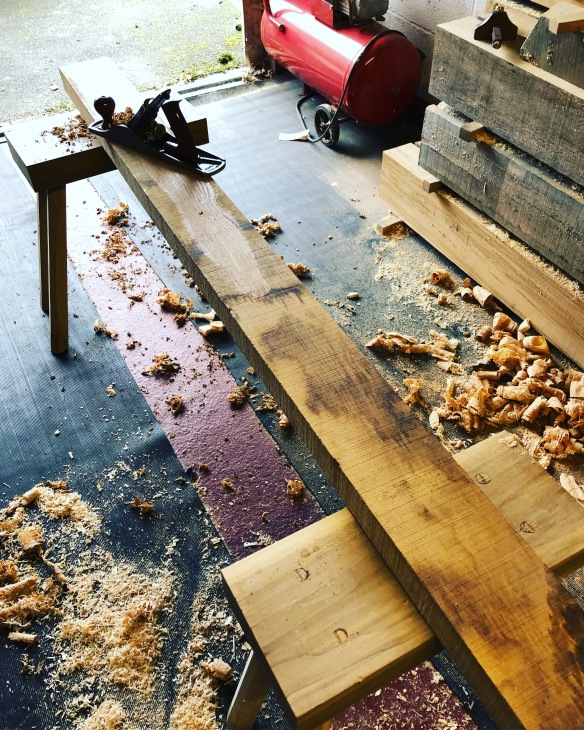
Processing the long stretchers on the staked saw benches
Processing the stretchers was the same process as for any other furniture project, with a few significant exceptions.The first was that the long stretchers were quite a bit longer than my Sjoberg benchtop, and too wide to fit in the face vise. To plane the wide sides I would be unable to work at the bench, unless I was prepared to clamp the stretcher to the benchtop and work it in sections. That sounded like a slow way to work, so instead I took the opportunity to try some of the techniques explained in Ingenious Mechanicks. I don’t have a low workbench (yet) but I figured my saw benches would work at a pinch. Setting up the long stretchers on the saw benches, I was able to sit on the workpiece to keep it in place, and plane the section in front of me, before shuffling back a few feet and working the next section. Not having to adjust any clamps made this a very quick and efficient way to work, and I was surprised at just how comfortable working while sitting down was. The saw benches are incredibly versatile, and have really earned their keep since I built them in 2016.
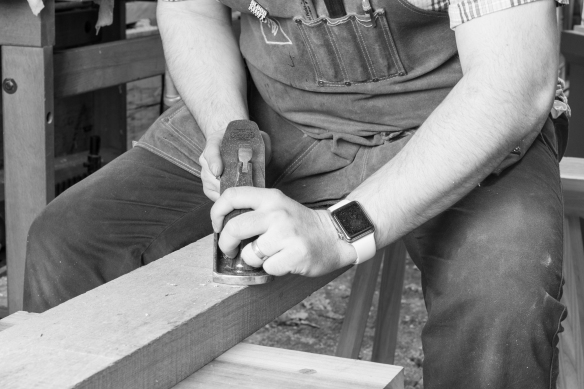
Sitting down on the job (literally) is a comfortable and efficient way of processing stock
If I were working this way regularly I think a set of wooden bench planes would be beneficial, including a shorter jointer plane (the No8 is quite a weight, and length, to be extending out in front of you from a sitting position), but on the whole this was an enjoyable and efficient way to work. The one area where the saw benches did not work quite as well as a dedicated low bench was the last section of the stretcher, which you can’t sit on as you work it – a low bench would have a planing stop or series of pegs to secure the workpiece while working at the far end. At this point I did reach for a couple of clamps, but as that was the final short section it did not slow me down too much.
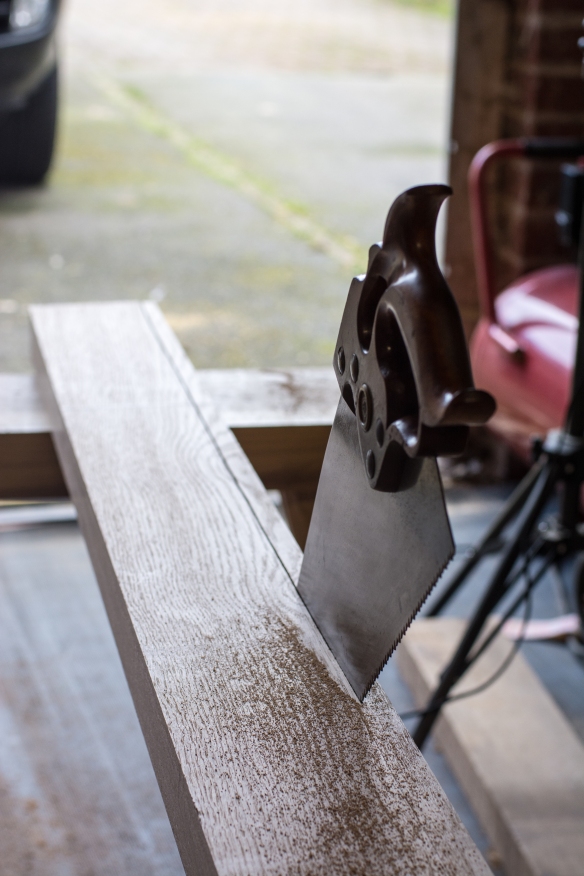
Ripping the stretchers to width with my trusty 1900 era Disston D8
The second difference to processing furniture sized stock was that the thickness of the stretchers exceeded what my shooting board plane could comfortably handle. I want all of the stock for this project to be as accurately processed as possible, so as to avoid any unpleasant surprises come glue-up, and that includes accurately squared-off ends. With my shooting board out of the question, I turned to my mitre box and Bad Axe mitre saw. Having knifed in clear layout lines on all four sides of the stretcher ends, I cut a deep kerf along each knife line using the mitre box. The four kerfs then guided the saw to leave a clean and square end from which I can layout the tenons.
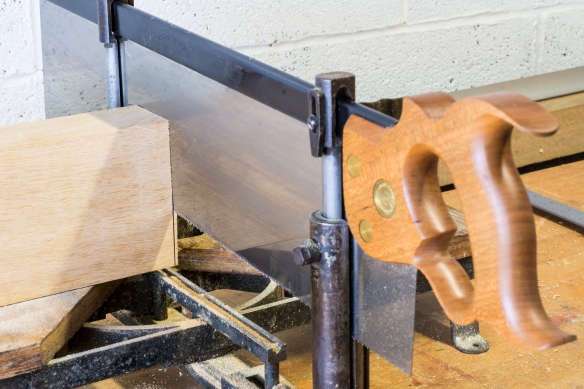
Squaring off the stretchers with a mitre box. Kerfing in the layout line on all four sides offers a “path of least resistance” which guides the saw
With the stretchers processed and ready for tenoning, the next task will be to process the legs. These are 6″ wide and 4″ thick, so will represent a step-up in dimensions and scale of work. It will be interesting seeing what lateral thinking they require.

